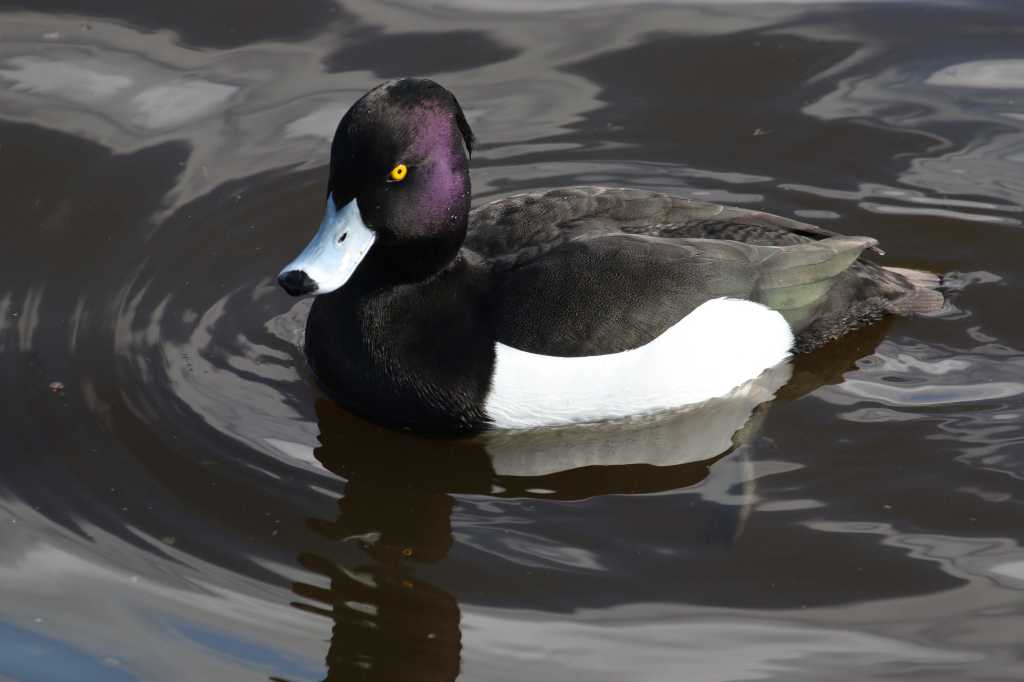Tufted Ducks are a familiar sight at wetland habitats in our part of the UK. Although less plentiful than Mallards and Canada Geese, they are nevertheless a bird that I would expect to see whenever we visit local reservoirs, lakes and ponds. For me they are a fixture in our birding landscape. But, as I recently discovered to my surprise, that’s not quite true: Tufted Ducks, or “Tufties” as Mrs P and I prefer to call them, first arrived in this country less than 200 years ago.

Records suggest that Tufties started to colonise the UK in 1849. A few decades earlier the Zebra Mussel Dreissena polymorpha had been accidentally introduced into the country, and as this invasive species began to thrive Tufted Ducks followed in pursuit of a much-favoured source of food.
The number of resident Tufted Ducks in the UK grew steadily until at least the early 2000s, and it now breeds in most of England, as well as parts of lowland Scotland and localised areas of Wales and Ireland. The breeding population is around 18,000 pairs. In winter, numbers swell with the arrival of around 100,000 migrant birds from as far away as central Russia.


Male Tufties are handsome black-and-white birds, with a characteristic tuft and bright yellow eyes – totally memorable. Although the females also sport a tuft and yellow eyes, their drab buff-brown plumage renders them somewhat forgettable. Scouring Mrs P’s vast photographic archive, I discovered that nearly every photo that she’s ever taken of this species features the male. That, I think, tells you all you need to know about the differing visual appeal of male and female Tufted Ducks!
Tufties are fun to watch, busy little ducks that paddle swiftly across open stretches of water, before diving in pursuit of aquatic invertebrates and bivalve molluscs. It seems like they belong in this landscape and must therefore have been here forever, which makes it difficult to believe that British nature lovers at the start of Queen Victoria’s reign would have been denied the pleasure of their company.

The lesson to draw from this, I guess, is to remember that what we see today is just a snapshot in time. Species come and species go; it’s a natural process, although human activity speeds it up and can cause major instability. I wonder which birds species are entirely absent from the UK today, but will be taken for granted by British birders in the 22nd century?
I love tufted ducks so interesting to read about their history.
LikeLiked by 1 person
I love them too; they’re very special birds.
LikeLike
Aren’t they wonderful. I photographed them in Southern California once. They are not native, but occasionally show up.
LikeLiked by 1 person
I didn’t know they’d made it to North America. Very intrepid.
LikeLike
I also like Tufties (and your name for them 😊) and usually get to see them when I’m in Germany. But I have never been able to get as close as Mrs. P. whose photos are wonderful. I’m glad you found at least one female. I also try to capture photos of females, even if their plumage is less spectacular. My favorite duck photos are the ones that show both sexes next to one another.
Your point about the passage of time is poignant. We see and experience such a short sliver during our lifetimes. It’s a good reminder to stay humble and appreciate what we have.
LikeLiked by 1 person
Photos featuring both male and female birds of the same species are revealing, and sometimes very surprising. Sexual dimorphism adds to the challenge of birding – it’s hard enough to learn the differences between the various species without the added problem that in some species the male and female bear almost no relation to one another!
LikeLiked by 1 person
Exactly.
LikeLiked by 1 person